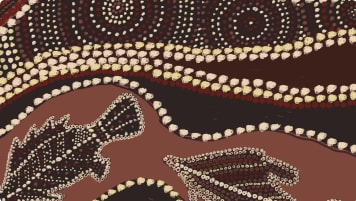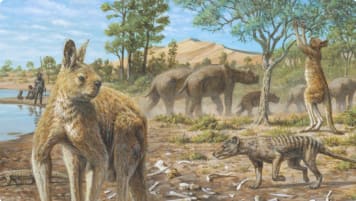Ice age archaeological sites of the Tasmanian Wilderness World Heritage Area, Australia
Ice age archaeological sites of the Tasmanian Wilderness World Heritage Area, Australia The Franklin-Gordon Wild Rivers National Park is one of the most remote places in Australia, a wild labyrinth of winding gorges, rushing rapids,…
16 Jul 20 · 7 mins read

Ice age archaeological sites of the Tasmanian Wilderness World Heritage Area, Australia
The Franklin-Gordon Wild Rivers National Park is one of the most remote places in Australia, a wild labyrinth of winding gorges, rushing rapids, river bends and limestone cliffs; dense rainforest shrouded in seemingly-ever present mist. Passing through the area, it’s hard to imagine that it was ever inhabited, let alone home to some of the most ancient human remains in Australia: over twenty sites, charting the southern-most extent of human habitation during the Ice Age.
Prior to the discovery of the remains in the late 1970s, consensus was that the rainforest areas of western Tasmania were a ‘true wilderness’, the only part of the Australian continent to never be inhabited by Aboriginal peoples. This idea of ‘wilderness’ became crucial to public conceptions of the area, promoted by Lithuanian photographer Olegas Truchanas and his Latvian protégé Peter Dombrovskis. In the 1970s, the belief that the area was one of the last places on earth unsettled by human beings was at the heart of the emerging environmental campaign to save the Franklin River from destruction via damming.
Discoveries were soon made that upended the assumption of ‘wilderness’. In the 1970s, a group of cavers led by Kevin Kiernan were systematically exploring the area in the hope of aiding the campaign to save the Franklin River. By 1979, over a hundred caves had been found and mapped, including one – then named Fraser Cave, after the then-Prime Minister Malcolm Fraser in an attempt to influence his political judgement – which was noted as containing ‘a large bone deposit’. [In 1982, the cave was renamed Kutikina by the Tasmanian Aboriginal Centre, from a word meaning ‘spirit’ in the oral tradition of the dispossessed community on Babel Island in the Bass Strait].
The description naturally caught the eye of archaeologists. As a result, two archaeologists, Rhys Jones and Don Ranson, joined the next expedition of cavers (including Kiernan) up the Franklin River in January 1981. On this trip, archaeologists found their first evidence of Aboriginal settlement in the area, ‘almost by chance’, as Jones later wrote in a 1987 article for Australian Geographic, when they noticed that an ancient beech tree had fallen into the river, exposing the bank. Turning back, the team found quartzite flanks. Though Jones assumed that they might be from the last Ice Age, radiocarbon dating revealed that they were only 300 years old! The finding was nonetheless tangible evidence of human occupation.
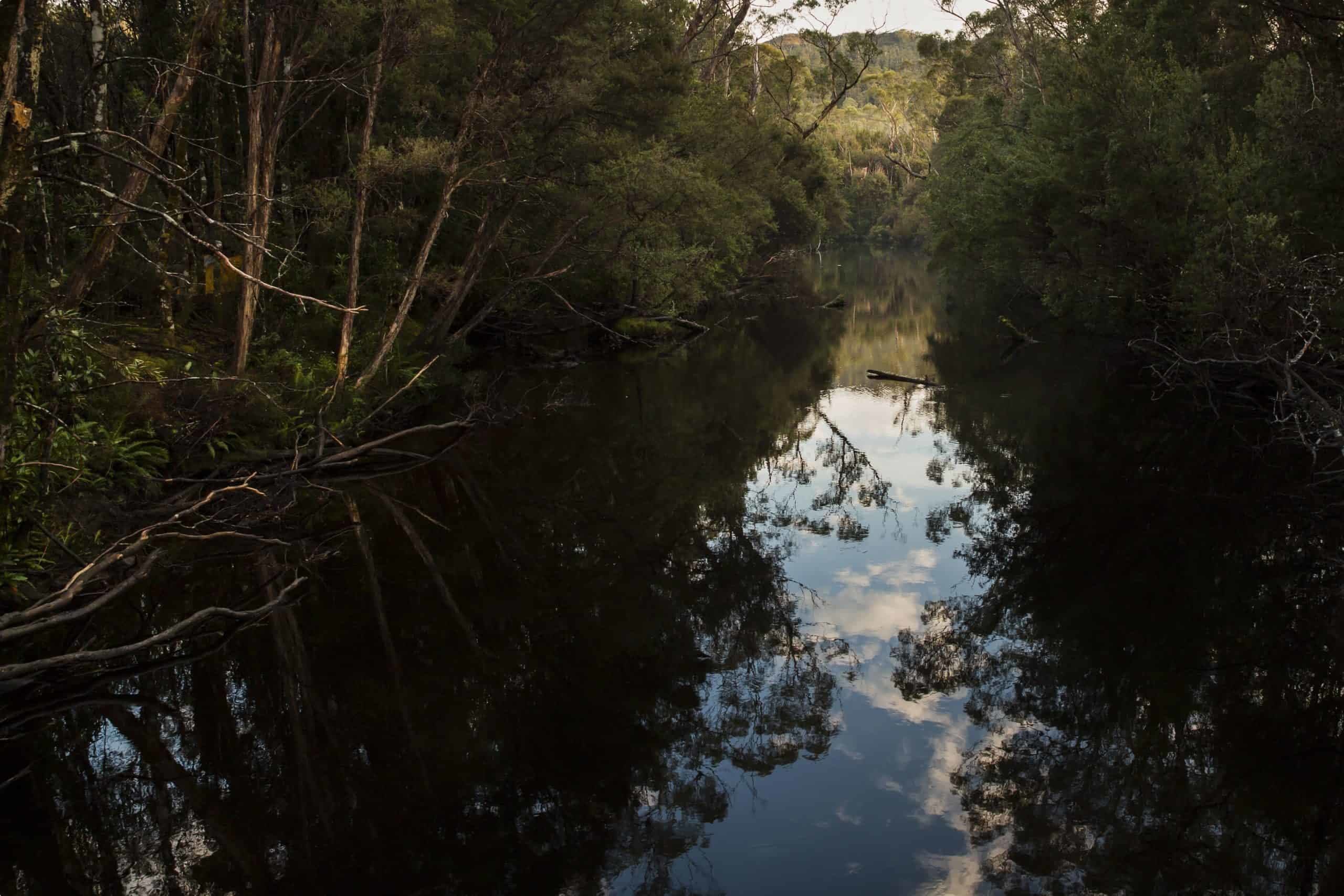
A few weeks later, Kiernan returned to the cave with Bob Brown and Bob Burton, the director and secretary of the Tasmanian Wilderness Society, respectively. Brown was hoping to find the bones of a convict who might have perished in the region after escaping the Macquarie Harbour Penal Station. What they discovered was much more ancient: a vast collection of bones and stone tools, scattered over an area of around 100 square metres.
Three weeks later, Jones, Kiernan and a team of archaeologists and cavers rafted down the Franklin to further investigate. For over 10 hours, with aching backs and rain-drenched clothes, the crew half-motored, half-walked two ramshackle boats to their destination. ‘Daylight was fading fast and still the rain poured down. Dense walls of vegetation crowding both banks were broken only by towering cliffs of dark grey limestone’, Jones would later write. Sheltering in Kutikina cave for the night, they would later learn that they ‘were the first people to sleep here for more than 13, 000 years.’
The excavation would prove an astonishing success. ‘The deposit was the richest we had ever encountered,’ Jones wrote, ‘the first sieveful yielded more than 1000 stone flakes and fragments.’ In total, the dig yielded 40, 000 stone artefacts and almost 250, 000 bone fragments, indicating that the site might hold a total of 10 million artefacts.
Radiocarbon dating later revealed that the cave was first inhabited at the beginning of the Ice Age, 20, 000 years ago; reached its peak 17, 000 years ago; and ended suddenly due to changing climatic conditions at the end of the Ice Age 13, 000 years ago. It was further evidence of the vast antiquity of Aboriginal culture in Australia.
Findings included four different types of stone tools: steep-edged scrapers, likely used to strip bark from trees and fat from skins; thumbnail-sized scrapers for fine work, probably on wood; sharp flakes for cutting; and the stones from which flakes were cut, likely also used for cutting. Stone tools were in turn used to fashion wooden spears and digging-sticks. The dig also found sharpened and smoothed slivers from the shin bones of wallabies, used for making garments.

The inhabitants of the cave would have lived in a very different environment from the one found today. At the end of the Ice Age, Tasmania was roughly the same distance from the polar ice sheet as Patagonia is today. The west Tasmanian mountains would have been home to glaciers; while, because so much water was locked in polar ice, the climate would have been much drier, supporting alpine herb fields rather than rainforest. Though much colder, this open habitat would have been much better for hunting.
Early occupation may have been a summer activity, with bands living further north, on the Bassian Plain (now Bass Strait) or even present-day Victoria. The tools of the deposit closely resemble those found near Lake Mungo, indicating extensive cultural exchange with mainland Australia.
At the end of the Ice Age, the rainforest would have spread back through the lowlands, destroying the hunt and forcing Aboriginal peoples to the edge of the landscape.
Saving the Franklin and Gordon Rivers:

The dig would prove crucial in the preservation of the Franklin and Gordon Rivers. Jones and fellow archaeologist John Mulvaney testified in front of the Australian senate in favour of its preservation. In December 1982, the site was formally listed as part of the Tasmanian Wilderness UNESCO World Heritage Site, as much for its cultural and its natural values. As UNESCO writes, the Franklin-Gordon Rivers region was recognised as an ‘outstanding example (of) …humanity’s interaction with the natural environment’, thanks to the over 35, 000 years of Aboriginal settlement in the area, including the use of caves and the history of fire-stick farming to create buttongrass moorlands.
The following year, the new Prime Minister Bob Hawke passed regulation forbidding further construction on the Franklin Dam. Premier Robin Gray took the matter to the High Court. The Tasmanian Aboriginal Centre testified to the importance of the site, while Jones and Mulvaney were called in as archaeological advisers on the case. The High Court narrowly found in Hawke’s favour, singling in its deposition out the importance of saving Kutikina Cave due to its value to world heritage.
In the aftermath of the case, over twenty more caves containing archaeological remains were found in the six valleys of the Franklin-Gordon River System. Occupation of each cave began around 20,000 years ago, and ended around 13, 000 years ago, at the end of the Ice Age. At Deena Reena Cave, similar collections of Ice Age tools, charcoal and bones were found, while paintings (likely from the Ice Age) were found at Ballawinne Cave on the Maxwell River. In total, the Tasmanian World Heritage Area is home to approximately 1000 Aboriginal heritage sites.
The area continues to be of great spiritual significance to today’s Tasmanian Aboriginal community, and many sites have been returned to Aboriginal ownership under the Aboriginal Lands Act 1995, including Kutikina Cave.
Far from a wilderness, the wild landscapes of Western Tasmania are a place of ancient human habitation, with an enduring spiritual and cultural importance.
For more information on the importance of archaeology in reconceptualising our understanding of Australia’s ancient history, we urge you to read Billy Griffith’s Deep Time Dreaming: Uncovering Ancient Australia, which was used in the writing of this article.
Odyssey Traveller visits the Tasmania‘s Wilderness as part of our Wildlife Tour of Tasmania. Beginning and ending in Hobart, our tour passes through some of the most spectacular scenery found on the island state. On the first day of our Tasmania tour, we make a day trip to Maria Island, a former convict settlement turned National Park, which is home to several endemic species, including Bennett’s wallaby, the Tasmanian pademelon, and the Forester kangaroo. Following this, we wind our way up Tasmania‘s east coast, visiting the Freycinet Peninsula and iconic Wineglass Bay.
We then head inland to Launceston before heading to Tasmania‘s wild west coast. We spend two nights near Dove Lake and Cradle Mountain, home to several species of native wildlife, including the Tasmanian devil (known to locals as the Tassie devil), the spotted-tailed quoll, the eastern quoll, and the platypus. We then pass through the Tarkine Rainforest, before heading to the eerie penal settlement of Macquarie Harbour. We then explore the Franklin-Gordon Wild Rivers National Park, before returning to Hobart via Lake St. Clair and Mt Field. On the last day of the tour, we make a day trip to Bruny Island, a true wildlife sanctuary home to several distinct species of Tasmania‘s wildlife, including white wallabies, Bennetts wallaby with a rare genetic mutation that gives them white fur.
Tasmania is also home to a number of endemic birds, which travellers should watch out for on our Tasmania wildlife tour.
Odyssey Traveller has been serving mature and senior travellers since 1983. Our tours are designed for the curious, who want to learn about their destination as they travel. We move in small groups of between 6-12, and are joined by an expert tour leader and local guides.
Travellers with an interest in visiting Tasmania may also be interested in our colonial history tour and our walking tour of Flinders Island.
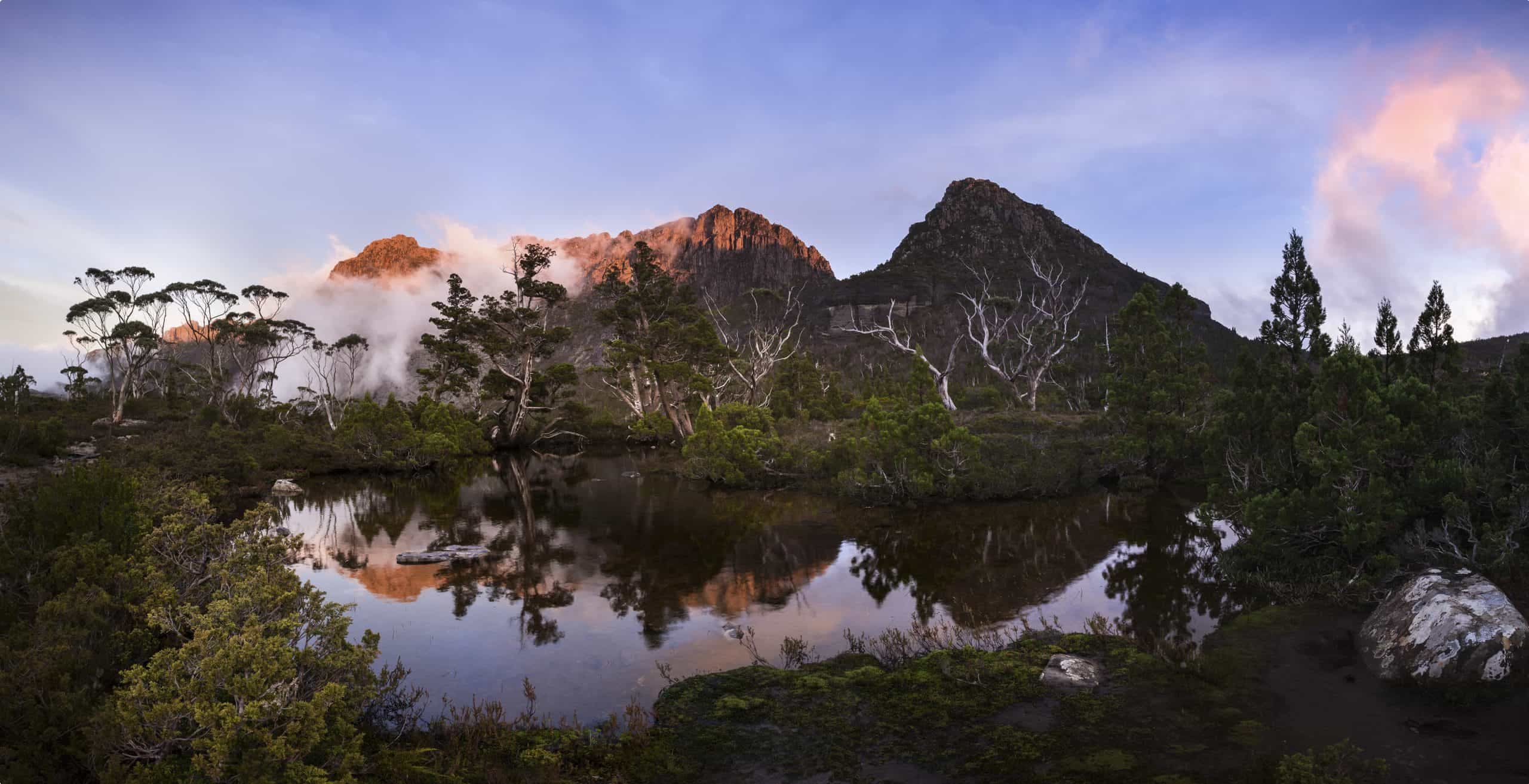
Articles about Australia published by Odyssey Traveller:
- The Kimberley: A Definitive Guide
- Uncovering the Ancient History of Aboriginal Australia
- Aboriginal Land Use in the Mallee
- Understanding Aboriginal Aquaculture
- Mallee and Mulga: Two Iconic and Typically Inland Australian Plant Communities (By Dr. Sandy Scott).
- The Australian Outback: A Definitive Guide
- The Eyre Peninsula: Australia’s Ocean Frontier
- Archaeological mysteries of Australia: How did a 12th century African coin reach Arnhem Land?
- Ancient Aboriginal trade routes of Australia
For all the articles Odyssey Traveller has published for mature aged and senior travellers, click through on this link.
External articles to assist you on your visit to Australia:
Related Tours
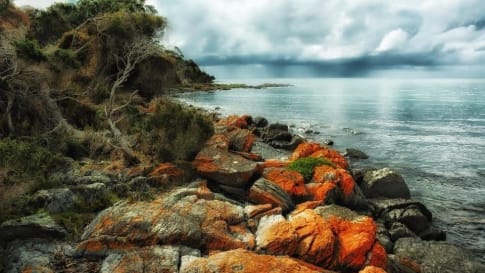
19 days
Mar, Nov, FebDiscovering Tasmania’s Wildlife
Visiting Tasmania
Small group tour of up to 15 mature and seniors travellers visiting and learning about Tasmania's wildlife and history. Visit Maria Island, Freycinet peninsula, Cradle Mountain, Strahan, Lake St Clair and Bruny Island over 16 days.
From A$11,450 AUD
View Tour
days
Mar, Aug, Sep, Oct, Nov +3Tours of Tasmania; exploring colonial history
Visiting Tasmania
Escorted program for couples and single travellers visiting Hobart, Launceston through the Tamar Valley along the rugged coastline of the north coast and heading back south to the pristine wilderness around Cradle Mountain and then on through Strahan, Queenstown and past Lake St Clair, before arriving back in Hobart. This 18 day small group tours to Tasmania for mature and senior travellers interested in the colonial history of Tasmania. We follow the footsteps of the colonists, visiting the churches where they worshipped, the houses in which they lived, the taverns where they drank and some of the mills in which they worked.

9 days
Mar, Nov, OctSmall group tour of Flinders Island
Visiting Tasmania
Explore and learn about Flinders Island on an escorted small group tour for mature and senior travellers who enjoy a walking holiday. For couples or solo travellers. We also explore Cradle Mountain and Launceston.
From A$6,950 AUD
View Tour